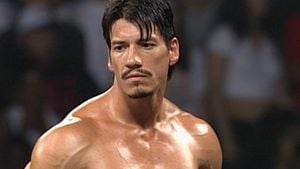The political dynamics of Canada are shifting dramatically with the emergence of the Canadian Future Party. Officially launched at the National Press Theatre in Ottawa, this new party aims to carve out space for centrist candidates, potentially altering the established political order.
Dominic Cardy, the interim leader of the Canadian Future Party, introduced Mark Khoury as the party's candidate for the LaSalle-Émard-Verdun byelection. Another addition, Zbig Strycharzy, will also run for the Elmwood-Transcona byelection, signalling the party's immediate ambitions.
Neither candidate previously held political office or had any notable political affiliations, raising questions about the party's ability to attract voter interest. While Cardy referenced polling data indicating Canadian desire for alternatives to the longstanding Liberal and Conservative parties, many political analysts remain skeptical about the timing and viability of such efforts.
Éric Grenier, who tracks polling trends, pointed out the lack of clear public enthusiasm for adding another political entry. Instead, he suggested there may be more demand for leadership changes within existing parties, rather than the establishment of new ones.
According to the Angus Reid Institute, leaders of the main three political parties currently enjoy less popularity than their counterparts over the past fifty years. This trend adds to the concerns about the Future Party's likelihood of finding traction amid voter discontent.
Shachi Kurl, president of the Angus Reid Institute, emphasized the significance of the low approval ratings for the existing leaders, hinting at space for potential new entities. Yet, she cautioned against assuming this space would translate easily to success for the Future Party.
Historical perspectives also warn against overestimations. Grenier pointed out previous attempts to form new parties have had mixed results, noting the Canadian Future Party’s struggles could echo those faced by the People’s Party of Canada or Forces et Démocratie, both of which failed to secure substantial seats.
Despite these hurdles, the Canadian Future Party does come with some credentials, including former NDP MP Denis Blanchette and backing from notable political figures like Peter Kent, who served as Environment Minister under Stephen Harper. This could lend them some credibility as they attempt to navigate their political debut.
Reflecting on the need to attract well-known leaders, Grenier acknowledged the advantage Cardy’s existing political background affords him, but also highlighted the substantial challenges he will face without broader name recognition. He indicated the party must not only target centrist particles but also differentiate itself from the established political figures.
Christy Clark, the former B.C. premier, previously stated the Future Party should focus on electing centrist candidates within existing parties instead of attempting to create another party. Her sentiment resonates with some critics who believe the Future Party could divert votes from the more established parties without yielding any tangible results.
Cardy has reiterated the importance of injecting fresh ideas and discourse within Canada's political arena, regardless of whether those ideas come from party affiliation or not. This approach seeks not just electoral seats but also aims to spark political conversation around issues often glossed over by the current leadership.
With the current political climate stirred by voter disenchantment, the Canadian Future Party may represent both hope and skepticism. Their ability to navigate the tough terrain of Canadian politics remains uncertain as they move forward.
Meanwhile, the party faces logistical obstacles typical for newcomers, from establishing broader visibility to finding support among political activists. It’s anyone’s guess whether they can transcend these barriers and effect change before the next general election.
Political experts will be closely monitoring the response to the party's debut candidates as the byelections approach. The outcomes will provide some insight on whether Canadians are ready for another voice, or if the appetite is for reshaping what already exists.
Beyond the immediate electoral ambitions, the Canadian Future Party represents broader discussions about voter sentiments across the country. Canada’s political map has been marked by two dominant parties for decades, but perhaps the emergence of new entrants signals evolving preferences among the electorate.
Whether the Future Party can capitalize on this sentiment or if it fades away like many before it will depend heavily on its organizational efficacy and public engagement. With each step taken, they inch closer to defining their place within the Canadian political framework.



